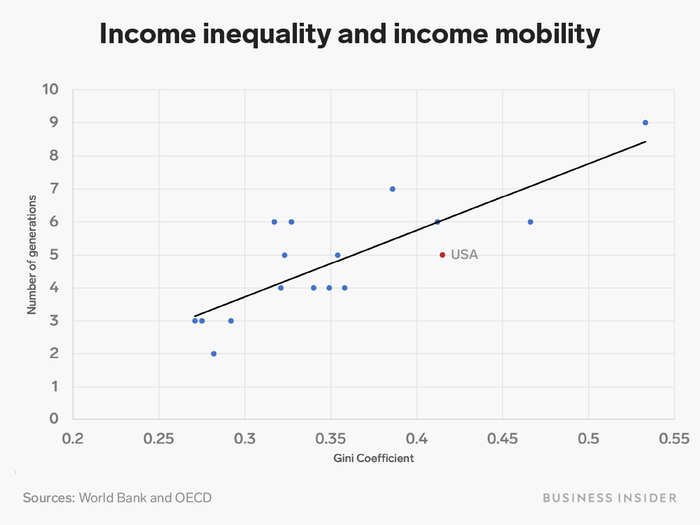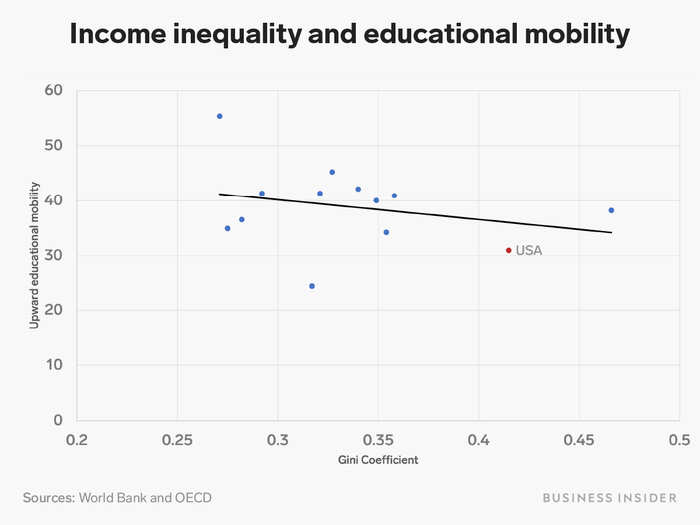The Great Gatsby Curve can be seen in other mobility measures, such as how many generations it takes for a low-income family to reach the average income.
Interestingly, and not surprisingly, the relationship between inequality and mobility can also be seen using the number of generations it will take for someone in a low-income family to move up the social ladder. In countries with better upward mobility, it would take fewer generations for low-income families to reach the country's average income.
The OECD created a bar chart that compares the number of generations that it would take for low-income families to reach the average income in countries part of the OECD.
For instance, in Nordic countries, it only takes about two to three generations, while in China where there is higher inequality and high elasticity, it takes seven generations, according to the OECD report.
The same is true for educational mobility: Upward educational mobility tends to be higher in countries with low income inequality.
If we examine upward mobility in educational attainment, we see that countries with less income inequality tend to have higher upward educational mobility, where a child earns a degree at a higher education level than their parents.
Using OECD upward educational mobility data from its 2018 education report, we measured upward educational mobility, on the vertical axis, against income inequality, on the horizontal axis. Unlike the previous charts, higher values along the vertical axis means more upward mobility.
So, a child born into a family at the 25th percentile in a country with low inequality has a higher chance of having a better education than their parents than someone born into a place with greater inequality.
The OECD notes using findings from academic research that policies that aim for educational equality regardless of parents' educational background can help improve economic mobility in a country.


